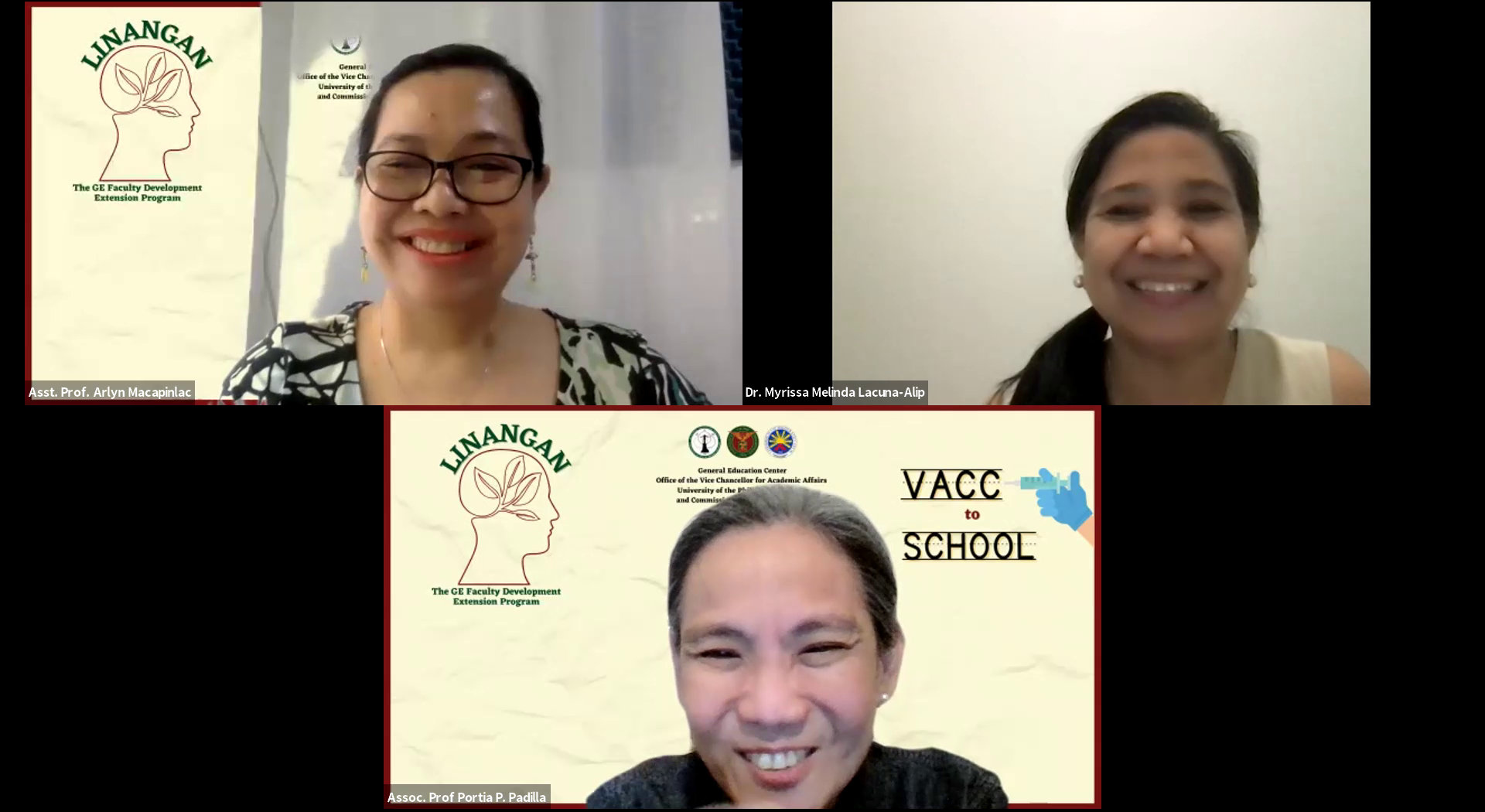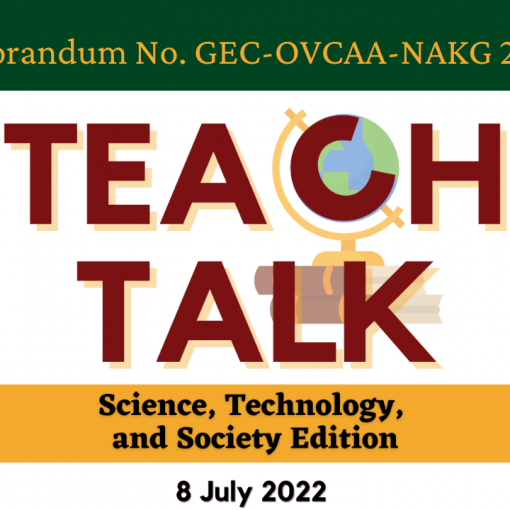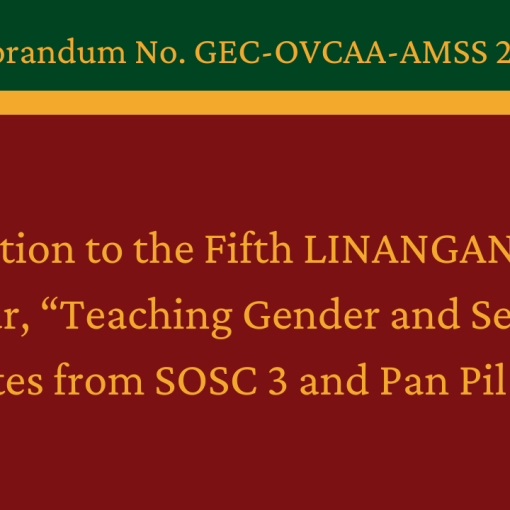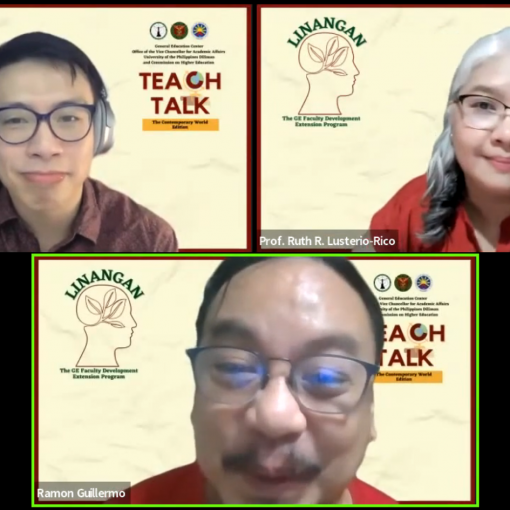With CHED and DepEd approving face to face classes in some areas in the Philippines, many teachers are curious about their learning setup under the new normal. Blended learning is seen as the most feasible mode of learning in the near term, so it is apt for GEC to conduct its Vacc to School webinar last November 15. Attended by more than 2,000 participants, the webinar touched on the fundamentals of blended learning, and the relevant guidelines on conducting face-to-face classes.
In UP Diliman, face-to-face classes were abruptly stopped short last March 2020 due to the onset of the COVID-19 pandemic. In her opening remarks, VCAA Prof. Maria Theresa T. Payongayong cited the actions taken by UP in responding to the challenges brought by the pandemic. She said that UP has equipped faculty and students with the proper infrastructure, learning materials, and teaching support for the remote learning mode. Further developments and the ongoing COVID-19 pandemic also highlighted the need to “future-proof our students and prepare them for an uncertain world”. In the end, she posed the timely question, “how do we face the next normal?”
View the full opening remarks by VCAA Payongayong
Facing the next normal’s teaching setup is a topic tackled by the first speaker, Assoc. Prof. Portia Padilla from the UPD College of Education. Her talk revolved on the definition and concepts behind blended learning, which integrates and aligns face-to-face and online learning components. Blended learning doesn’t follow a single formula, she says, and certainly has its own benefits and limitations. In facilitating blended learning, course design is the key. To that end, she gave points on properly designing a course for blended learning, which she summed up with the witty acrostic : “Course PAK GANERN”.
Of course, blended learning isn’t the only teaching setup under the new normal. Schools must be equipped with proper knowledge on the conduct and guidelines regarding limited face-to-face classes, which is the topic of the second speaker.
In her talk, Dr. Myrissa Melinda Lacuna-Alip, Director of the UP Health Service, discussed guidelines by DOH and CHED on the conduct of limited face-to-face classes, and reminded participants on proper face mask use, hygiene, and sanitation. She emphasized the need for schools to come up with a work plan and to determine the maximum number of allowed students. Students should have medical certificates, medical insurance, vaccination proof, and daily monitoring sheet before they can be allowed for physical classes. Also part of her discussion are building arrangements under the new normal. She recommended a physical distance of two meters in hallways and classrooms, done also in preparation for the COVID-19 Delta variant. To enforce this distance, visible signage and safety barriers must be installed in every corner, especially in classrooms, corridors, and even comfort rooms. Every room must have alcohols or sanitizers, and they should be properly ventilated with fans and open windows. Additionally, school buildings should ideally have their own holding areas and isolation rooms for quarantining COVID-probable students, faculty, or personnel.

Discussions on doing blended learning and limited face-to-face classes elicited some questions from the participants, most of whom were receptive to the points delivered by the speakers. These questions were tackled during the open forum moderated by Asst. Prof. Arlyn Macapinlac of the UPD College of Social Sciences and Philosophy. Some pressing concerns include how to exactly conduct blended learning, to which the speakers answered that there are many considerations to take into account. Retrofitting and future-proofing are keywords that were emphasized on the open forum, and participants were urged to always accommodate their students’ needs. The role and support of the national government were also emphasized, since the pandemic exposes issues of equity in the education sector too.
In the end, the webinar asserted the need for an inclusive, adaptive, equitable, sustainable, and compassionate education. The new normal inculcates new ways of teaching and learning including blended learning, which the participants of the webinar can surely agree with. As the third webinar under the LINANGAN program, Vacc to School was a timely event as it coincided with the gradual reopening of public schools in some areas nationwide.
The fourth webinar, Teach Talk (Critical Approaches in the Arts), is now open for registration. Meanwhile, participants who missed previous webinars can watch them on GEC’s YouTube channel and Facebook page. They are also encouraged to visit the LINANGAN web page for the complimentary materials and updates.




